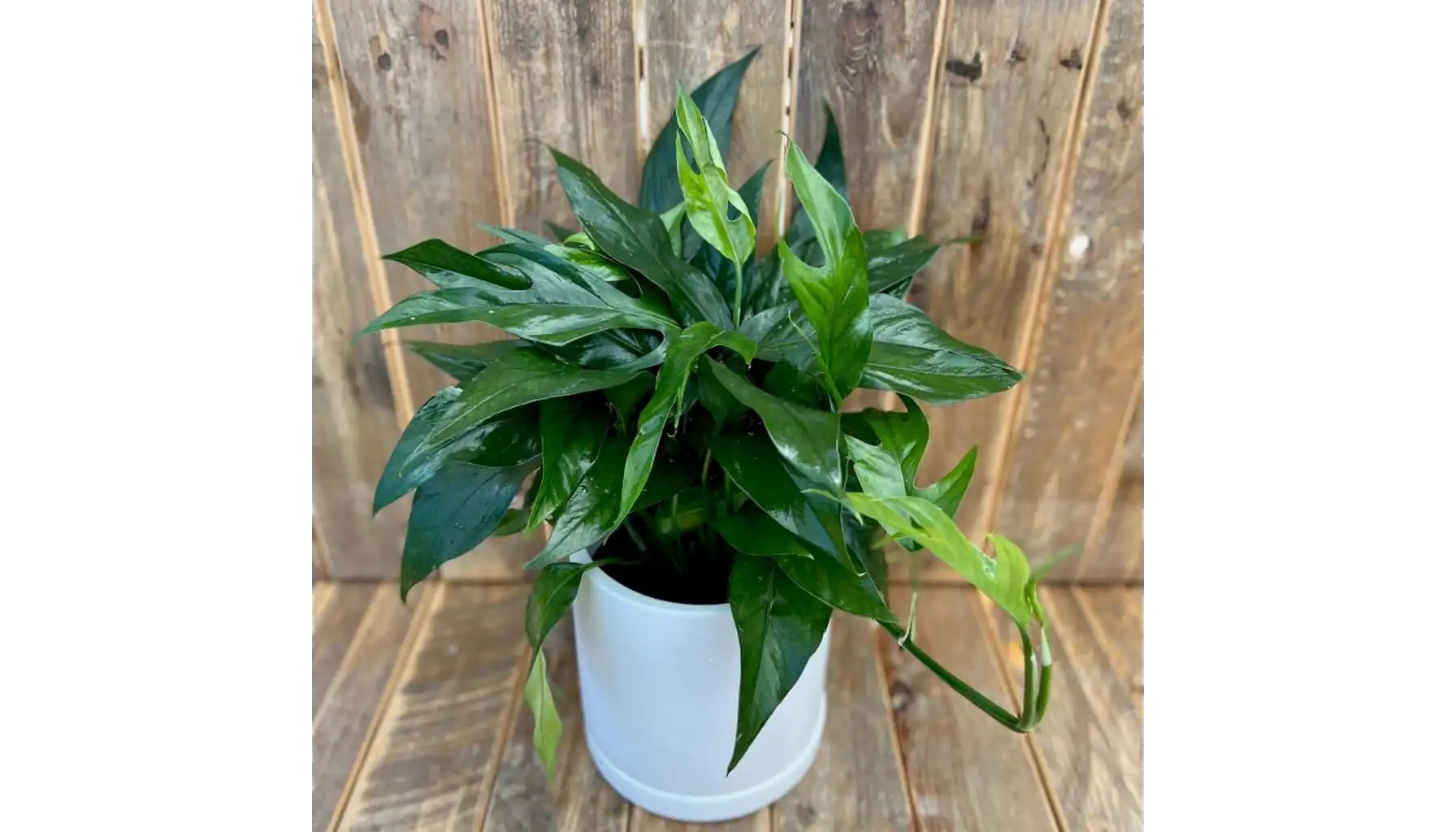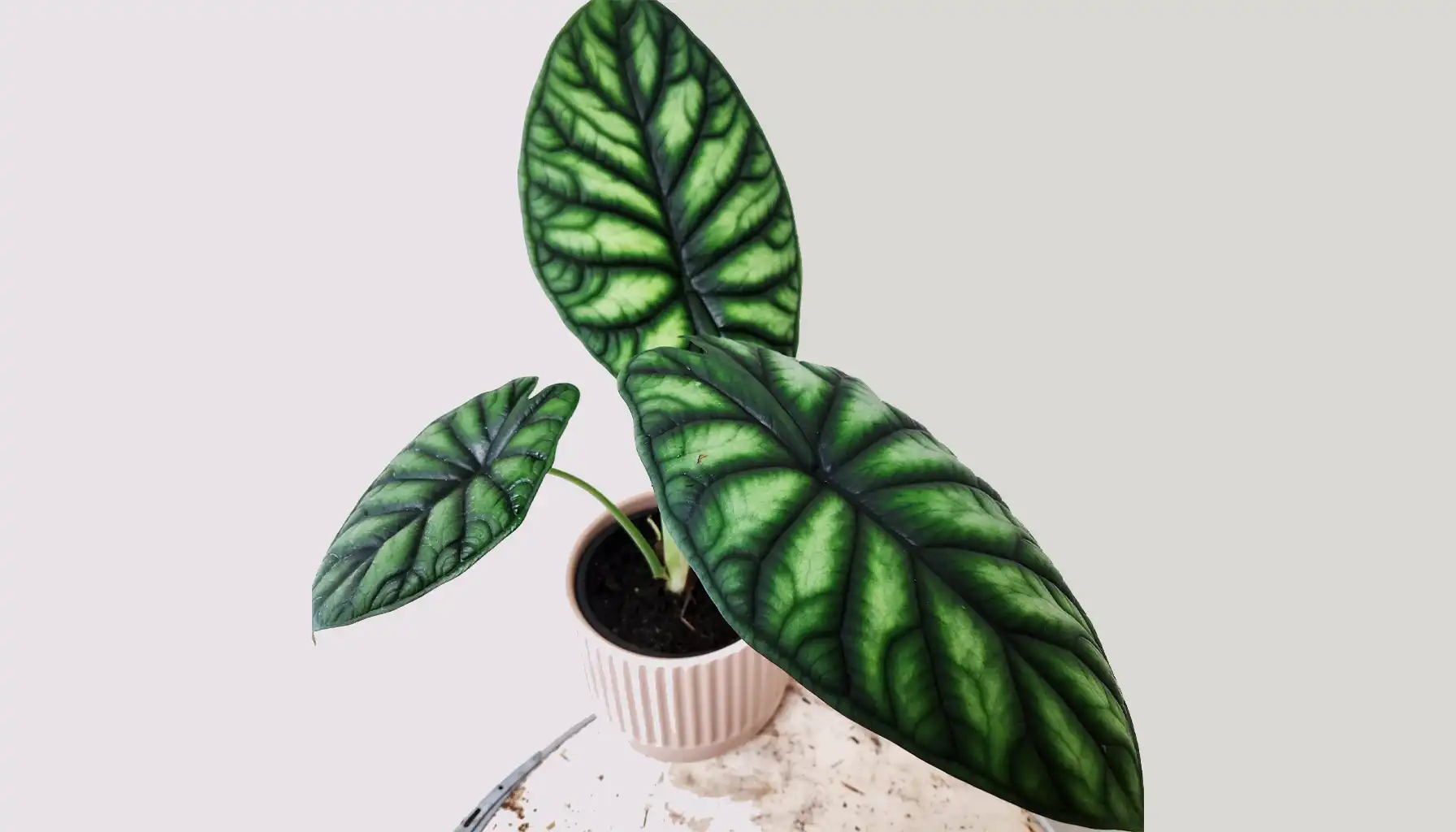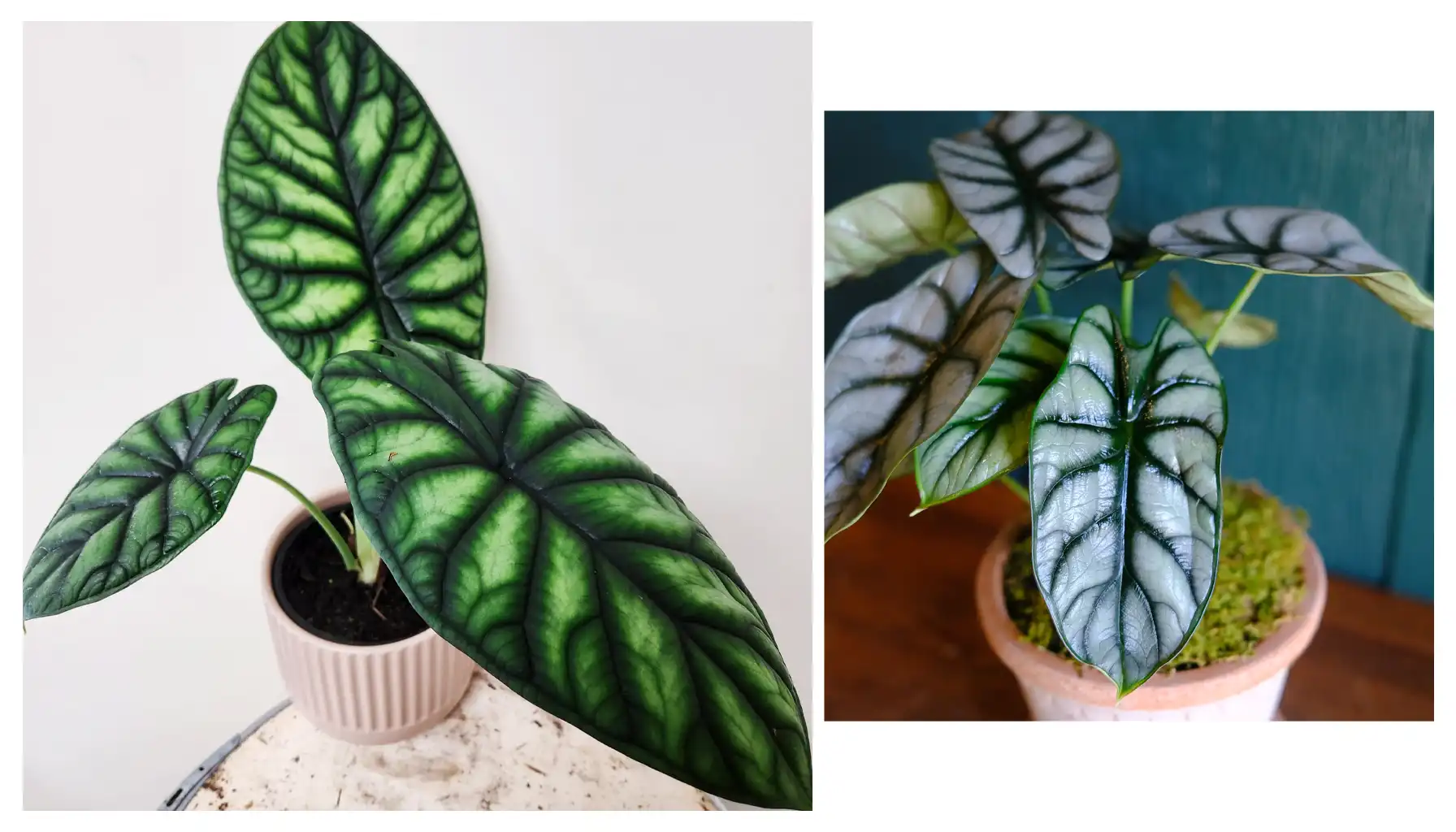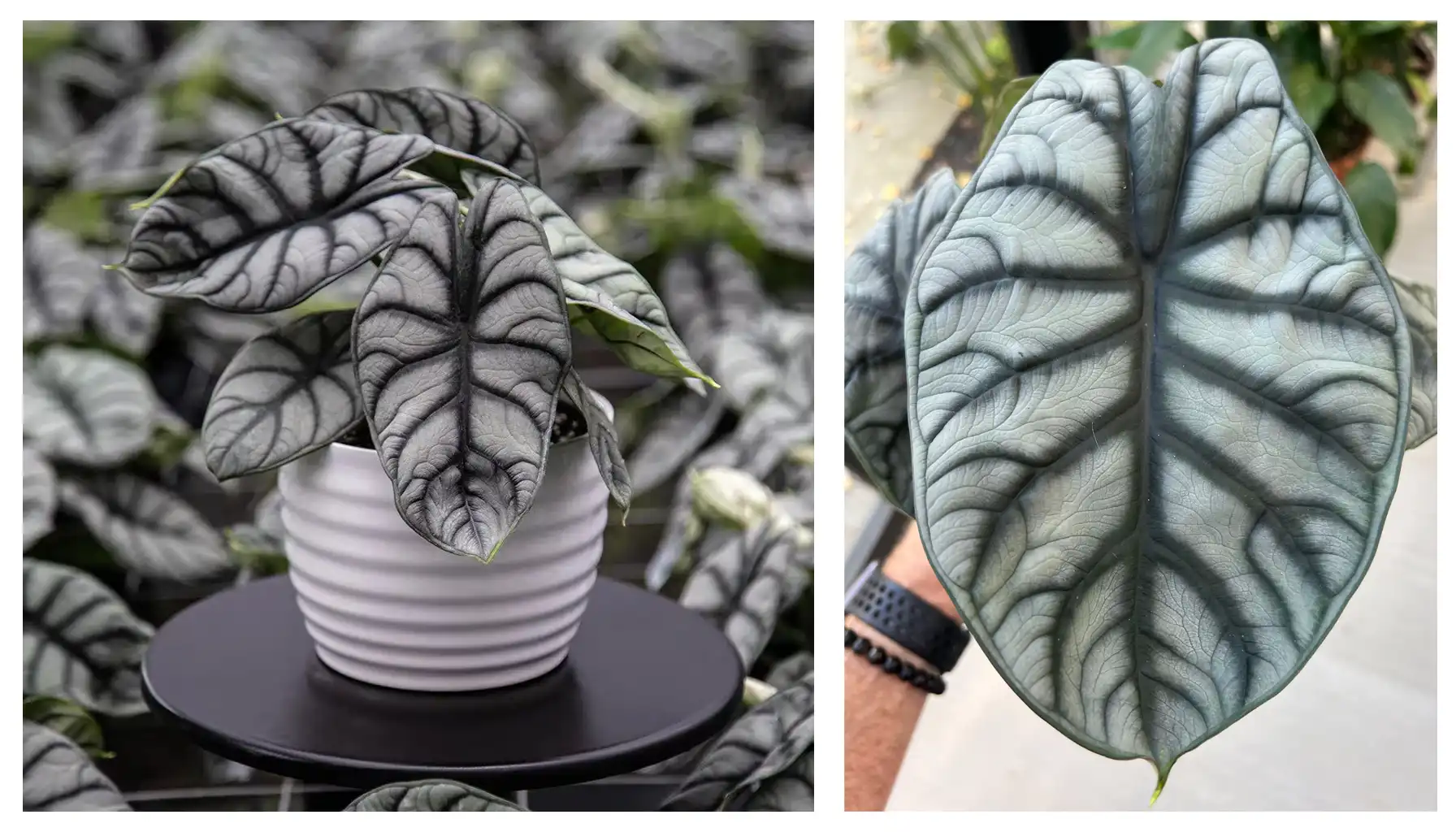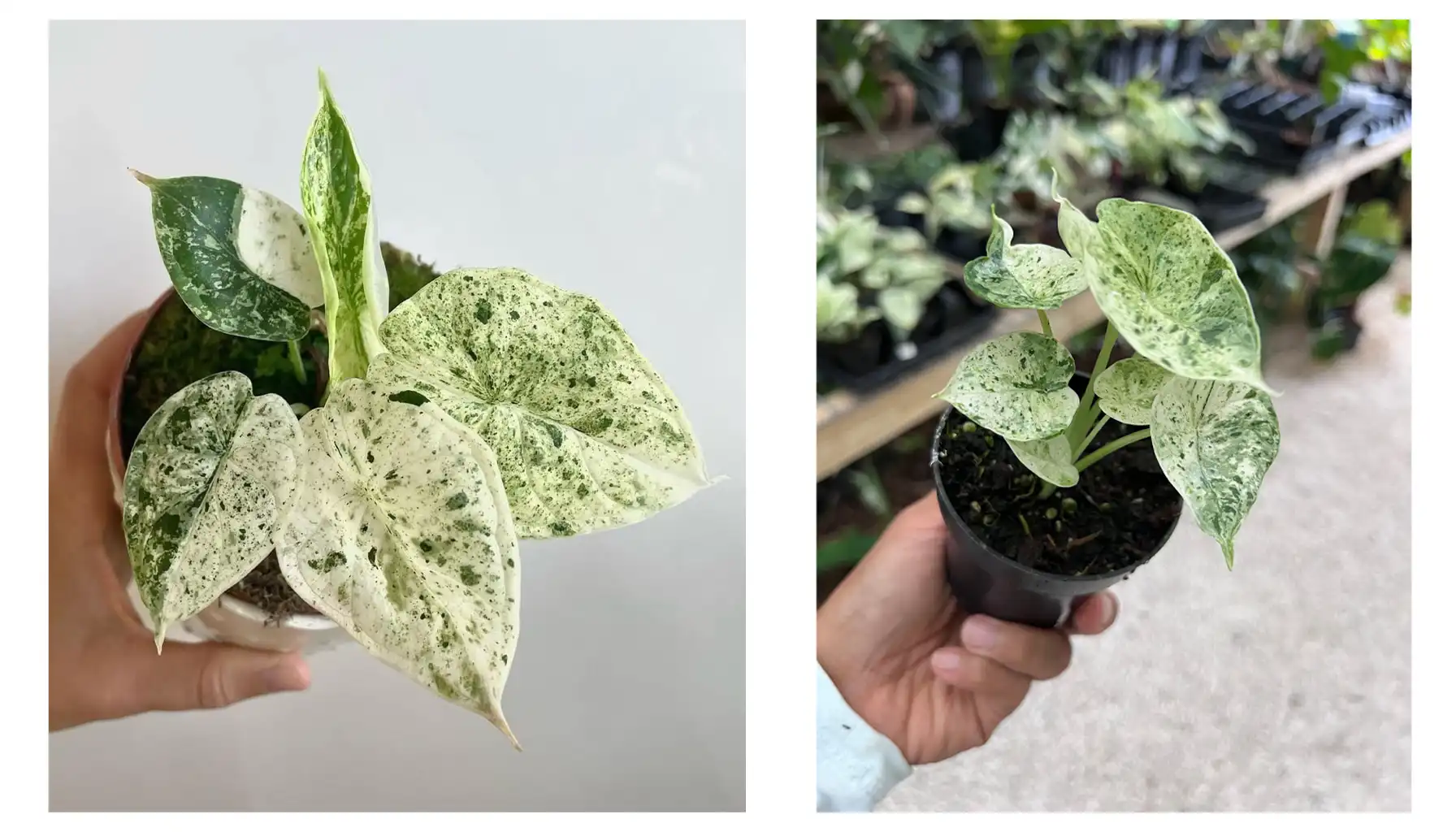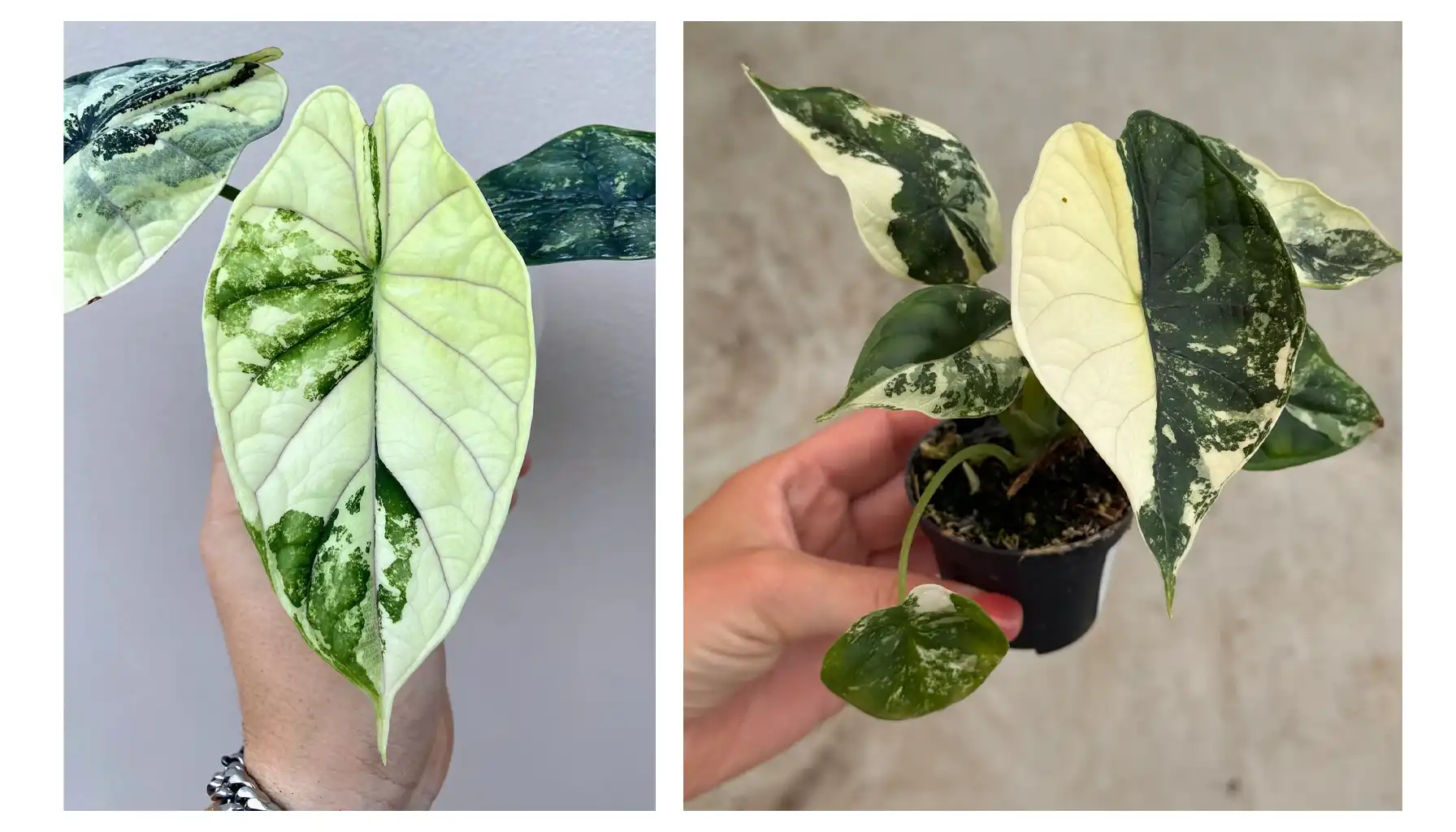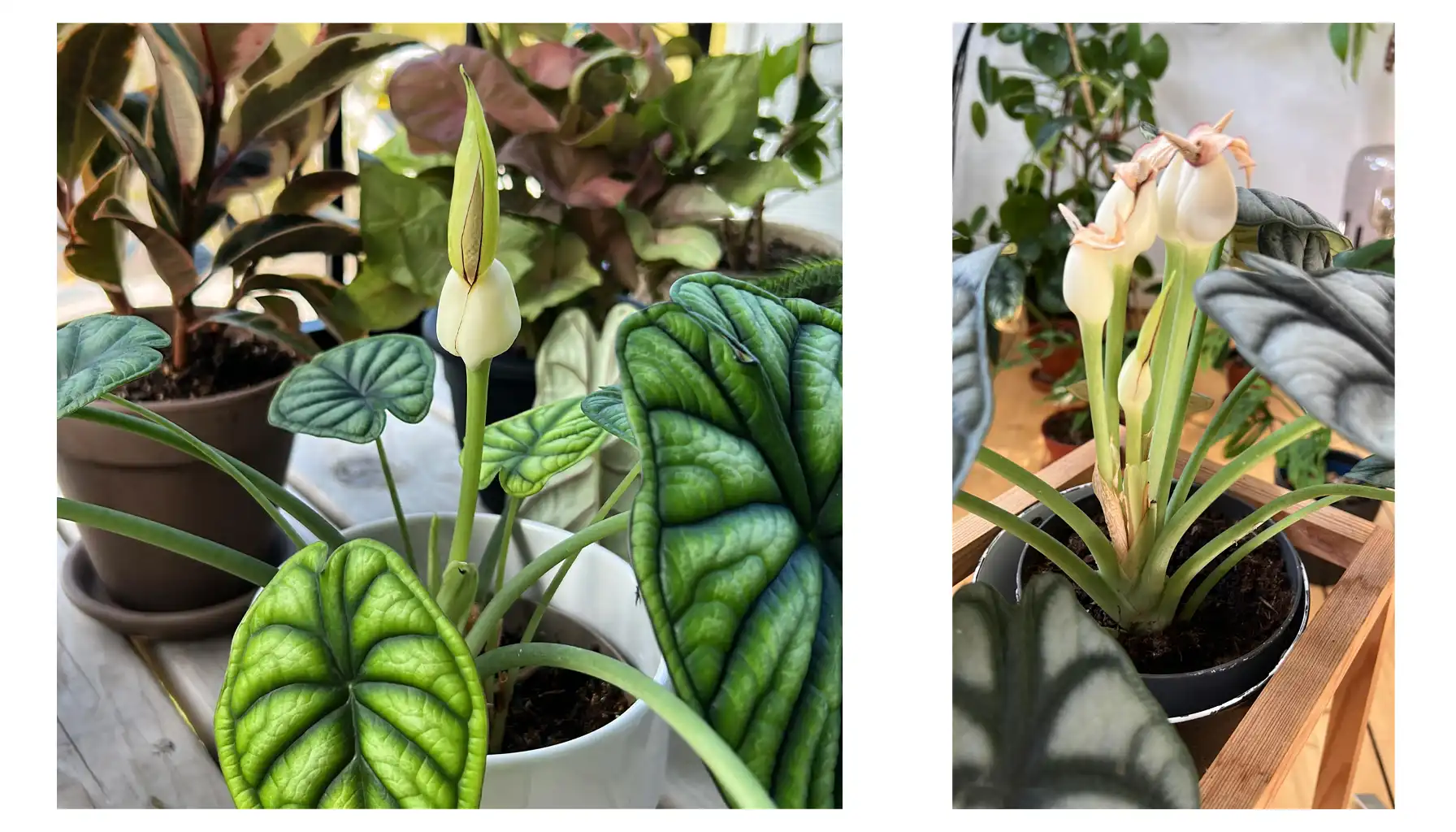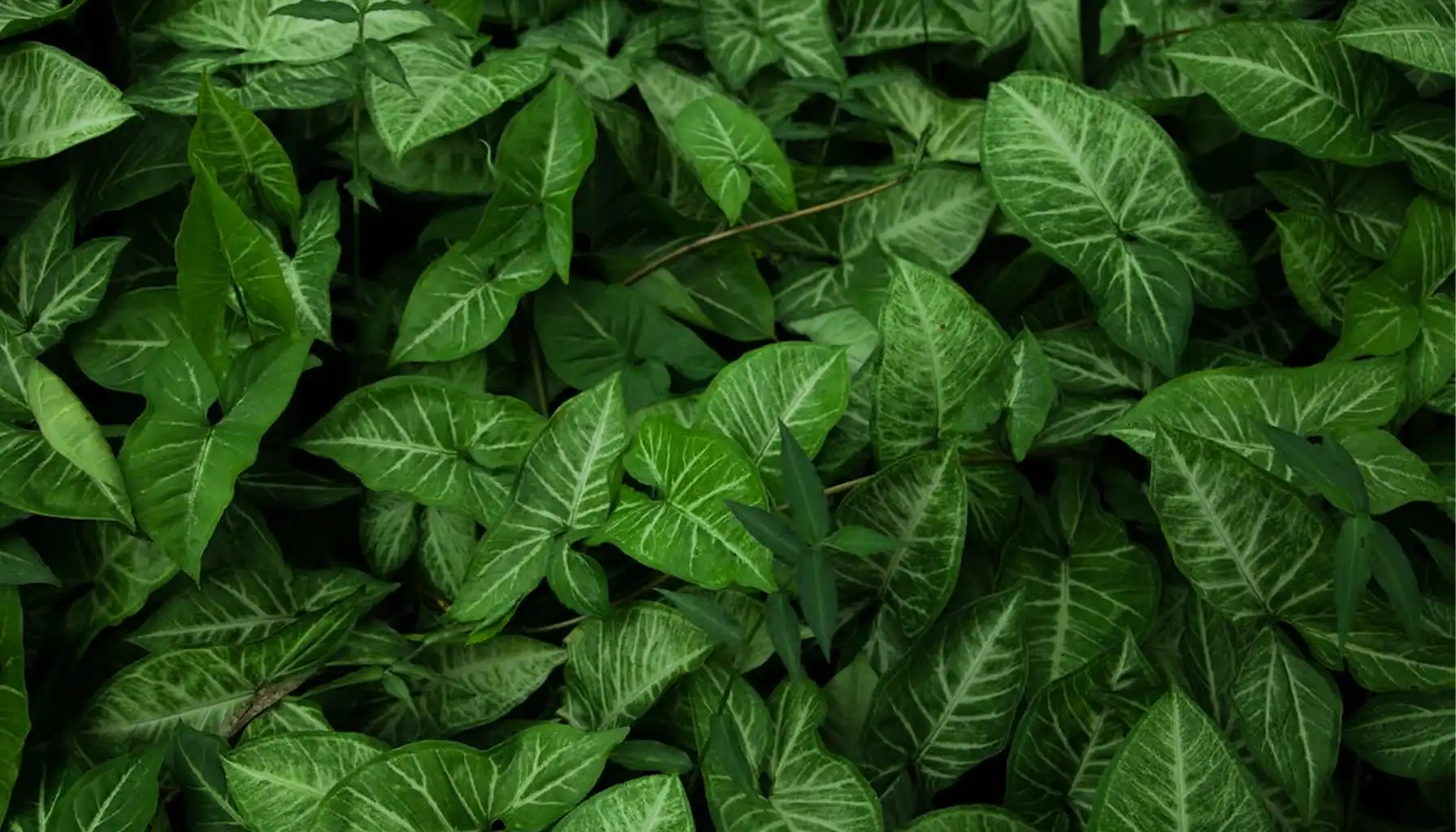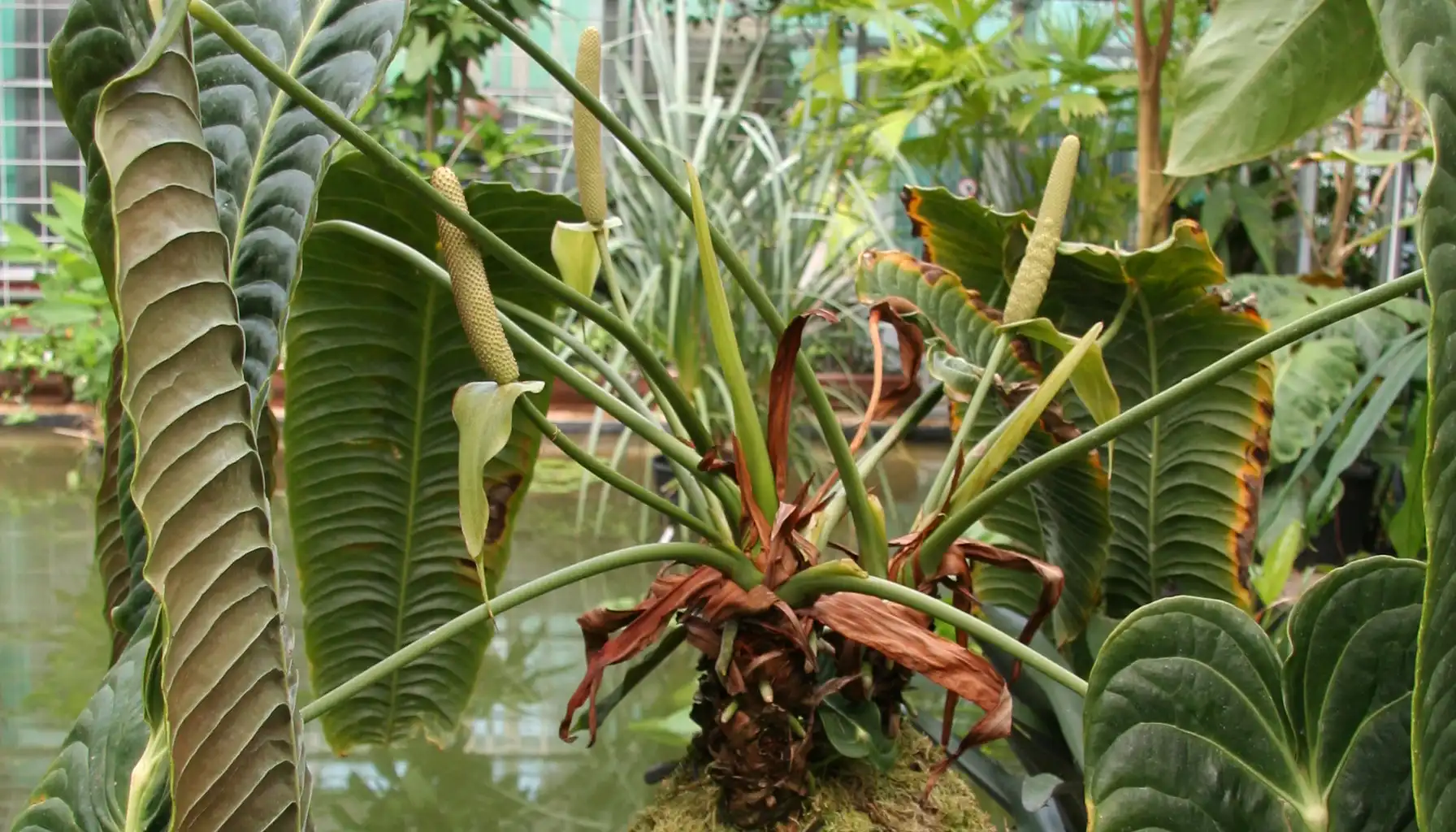We don’t know if dragons exist, but we do know that at least one plant with draconic features exists: Alocasia Dragon Scale.
Firstly, you will learn about the Variegated, Mint, and Albo varieties of this plant. Then you'll be treated to care and a flowering guide.
Have you heard of a Plant scanner app? Such apps can recognize flora for you. Now you’ll know every flower and bush around you.
About Alocasia Dragon Scale
The full name of this shrub is Alocasia Baginda Dragon Scale. This shrub is rare and commercially not so common. Some species of the Alocasia family were found by scientists and explorers not earlier than 10 years ago. Even Dragon Scale was first properly described in 2011.
The “Dragon” nickname comes from the foliage. Thick, embossed “dragon scale” leaves give a dramatic, sculptural appearance to these plants, especially when they are shimmering in the sun.
Dragon Scale Alocasia Overview |
Feature | Details |
Origin | Southeast Asia |
Type | Tropical perennial, aroid family (Araceae) |
Size | 2–3 ft (60–90 cm) tall |
Life span | Can live many years with proper care |
Leaf Colors | Deep black-green to nearly black |
Flowers | Cream coloured aroid spathe and spadix (rarely blooms indoors) |
Propagation | Mainly by division of rhizomes or offsets |
Toxicity | Toxic to humans and pets if ingested |
Special Features | Ornamental and collectible |
Alocasia Dragon Scale Varieties
Ornamental plants have a tendency to have multiple variations. Alocasia has a collectible value, and for this reason, its varieties are even more desired by collecting gardeners.
The standard variety has thick, embossed silvery-green leaves and dark veins. Alocasia Dragon Scale variegated leaves usually stand upright, which helps conserve space. If you look at Monstera, then you’ll notice that both have similar shapes (and are related), but it's harder to fit Monstera into a shelf.
Silver Dragon Scale Alocasia
Shape-wise wise this variety is similar to the “original”. The main difference is in the colour. The Leaves have a more pronounced silvery metallic look.
This form is often sought for its striking contrast in collections. This variety is also a bit hardier and easier to maintain than others.
Dragon Scale Mint Alocasia
This variety has slightly lighter green, less metallic sheen, though it retains the raised “scale” texture. Alocasia Dragon Scale mint might not look as unique as "Silver" or others, but it has a much friendlier look.
Just as the Pink Variegated Black Velvet Alocasia variety is rare, the Gold form is also very sought after. Gold and velvet go well together, for sure.
Alocasia Dragon Scale Albo
“Albo” means “white” in Latin, which describes this cultivar accurately. Albo Alocasia has white patterns. The patterns are diverse, appearing as splashes, marbling, or large sections of white.
There is a bleak side to this white plant. Shrubs get their energy from chlorophyll, contained in green parts. With white patches, this plant loses some precious energy sources and grows more slowly than others.
Alocasia Dragon Scale Care
Alocasia might not be the best pick for an inexperienced gardener, but it’s great if you know a bit of gardening and want to learn how to care for tropical plants. The needs for Dragon Alocasia are not much different from other tropical shrubs like Dieffenbachia.
Follow these steps, and you'll take good care of Variegated Dragon Scale Alocasia and other members of this family.
Light Requirements
This shrub likes bright, indirect light. Give it too much light → it can scorch the leaves. Give it too little light → the shrub will grow slower and have duller leaf color.
It’s best to place the Thai shrub a bit away from the window.
Watering and Humidity Requirements
This shrub likes water, but doesn't keep the soil soggy. You should let the top 1–2 inches of soil dry slightly between waterings; otherwise, the roots will rot. Always use pots with drainage holes.
Alocasia likes a humid environment (60–80% humidity). If you live somewhere with dry air, use:
Temperature Requirements
The shrub prefers a 65–80°F (18–27°C) range. Temperatures colder than that will likely put it into hibernation, which is why it won't grow during the winter.
Soil and Fertilizer Requirements
Use a light, airy, well-draining mix (potting soil + perlite + orchid bark) for this shrub.
Growing seasons, like spring and summer, are the perfect time for feeding. Feed Alocasia every 4–6 weeks with a balanced liquid fertilizer at half strength, and it will grow faster.
Growth Stages and Blooming
Like most wild shrubs, this one can grow from a seed or a rhizome, a part of the root. With time, leaves develop more texture and pattern but are smaller and lighter in color. The plant is weak and needs more water and nutrients to grow.
Mature Alocasia species reach their full size and develop a draconic texture in a few years. It lives on, from active growth in warm months to hibernating during the colder months.
In the wild, Alocasia Dragon Scale full-grown plants start blooming. Dragon Scale Alocasia flower is a small, pale greenish-white spathe wrapped around a cream or yellow spadix. This structure helps protect the flower. You can find similar structures in Peace lilies.
Posining Risks
Alocasia Variegated Dragon Scale is a poisonous plant. Its poisoning properties come from Calcium oxalate crystals. If you or your pet ingests a part of this plant, you will experience:
Burning sensation in the mouth and throat.
Swelling of lips, tongue, or airway.
Difficulty swallowing or breathing (in severe cases).
Stomach upset and vomiting.
The sap also contains these crystals and can cause a burning sensation when it gets spilled on unprotected hands.
Neither touching nor ingesting this plant won’t take your life, but you should keep this plant away from children and pets.
Benefits and Usage
Keeping a dragon at home won’t end up well for anyone, but a dragon Alocasia is a different topic. This shrub can bring a ton of good changes into your home, especially if you take good care of it.
Benefit | Description |
Aesthetic Appeal | Variegated Alocasia Dragon Scale leaves are striking. The textured, metallic-green foliage will make this plant stand out in any room. |
Interior Decoration | Adds a tropical, exotic look to homes and offices. |
Collector’s Value | Highly prized among aroid enthusiasts. It can be a rare and valuable addition to a plant collection, especially if it’s a special variety. |
Mood Enhancement | Having visually attractive plants indoors can reduce stress and improve mood. |
Air Quality (Minor) | Like many houseplants, it may help filter small amounts of indoor air pollutants. |
AI Plant Finder
Have you ever tried to find out the name of a plant? Then you must know that it’s not always easy. Some shrubs look alike, and it takes a lot of time studying all the varieties. Gladly, the AI Plant Finder can help you. Plant Identification is its job.
Here are the main functions of this app:
AI-Powered Plant ID: You simply snap or upload a photo of a plant, and the app uses AI to identify it. It can recognize thousands of species with impressive accuracy.
Extensive Plant Database: The app supports over 300,000+ plant species with an accuracy of about 97% for plant identification and 98% for disease recognition.
Disease Diagnosis: More than just ID, the app can detect plant diseases or pest issues from photos and advise on treatment.
Care Tools & Guidance: The app supports tools like a Water Calculator and a Light Meter. The water calculator estimates watering needs based on pot size, soil type, humidity, etc. The light meter helps find the best spots with optimal light conditions for your plants.
Want to check the app for yourself? It’s free to download.
Related AI Plant Finder Posts
